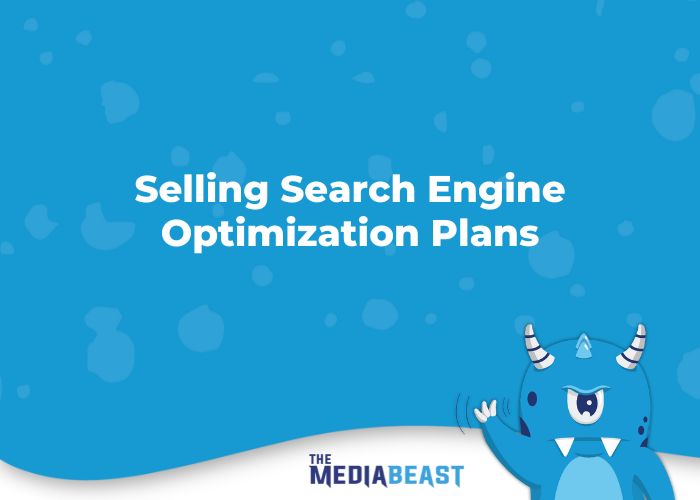Selling SEO in your market, the right way…
Whether you’re at a media company or an agency, offering Seach Engine Optimization (SEO) services is a profitable business. However, it can be challenging to start, even for SEO experts. You will need to know how to market the services to acquire clients. Moreover, prospective clients might not know how SEO works, the results it can bring, and how much it should cost.
In this article, we’ll teach you how to sell SEO services to make revenue, from determining your target market to promoting the services. We’ll also provide tips for setting realistic expectations, getting more clients, and growing your own SEO business.
How to Sell SEO Services in 6 Steps
Here are the steps to start selling SEO services.
1. Identify Your Target Market
We know you might not be sure what plan to offer for your SEO plans, so many SEO agencies and experts benefit from targeting a specific market. While general SEO principles apply across industries, focusing on a particular target market helps reach potential clients more effectively.
Start by determining whether you’ll target B2B or B2C businesses. Then, choose a specific industry. Start with a particular category or industry, such as plumbers, who belong to the Home Services Category.
When conducting market research (such as instant backgrounds in RAB.com), look for the following information:
- Industry competition. Evaluate the challenges of starting an SEO company in the industry and determine how your service can help.
- Customer Lifetime Value. Industries with high-profit margins, like real estate and car dealerships, let you justify higher pricing based. On the other hand, industries with higher customer lifetime value, like gyms and insurance firms, let you justify your costs against customer transactions over time.
- Cost. Determine the rate of the average SEO services in the industry. Ensure the businesses you target can reasonably afford your services.
- Networking. Establishing yourself in the industry is easier if you have connections who can introduce you to prospective clients.
Once you have determined your target market’s big picture, segment your prospective clients.
Whether you’re targeting local businesses or individual site owners, evaluate their demographics, interests, behaviors, location, income level, and goals. Then, categorize them into separate segments.
Segmenting helps determine what services they’ll need and how much they can spend. It will also help identify their goals and pain points. This allows you to develop personalized services and communication strategies that work in their favor. As a result, you can successfully help them bring more organic search traffic and conversions.
2. Know Your SEO Services
The SEO field is always changing. There are various approaches to offering SEO services to potential clients.
Although MediaBeast handles all aspects of what is needed and required for SEO, the services can be broken down into the following categories:
- On-page SEO. Improving visible elements on web pages, such as title tags, meta descriptions, headings, and on-page content. This ensures the content effectively targets the focus keywords and answers the search intent.
- Off-page SEO. Implementing strategies that help establish the website’s credibility and authority but are not related to the website content itself. Off-page SEO services include link building, social media campaigning, and influencer marketing.
- Technical SEO. Improving the site’s technical aspects, such as speed, user-friendliness, URL structure, and Core Web Vitals. Besides enhancing the user experience, it helps search engines crawl and index web pages better.
- Local SEO. Focusing on ranking for location-specific keywords, ideally in the 3-pack. Keyword examples include “best restaurants in New York” or “dentists near me”. It involves optimizing the Google My Business profile, managing Google reviews, and creating localized content.
When choosing which plan to offer, consider your clients ideal target audience and geo.
That said, focusing on one SEO area isn’t effective in ranking a web page, which is why we are your partner, we handle SEO clients as if we have financial stake in their company. It requires a combination of various types of SEO processes that we do internally. .
3. Know The SEO Plans
Determining the right plan for your client is crucial, as it will determine how fast your client will reach their website traffic and keyword ranking goals.
There are 3 main plans, and while they different in a few areas, the one to focus on is how many keywords does this plan optimize?
- Local – Small to Medium Market – 15 Keywords Optimized
- Regional – Medium Size Market to the entire DMA – 25 Keywords Optimized
- Premier – All encompassing – DMA coverage, plus additional cities – 40 Keywords Optimized
While we are not the least expensive SEO company, note that pricing can serve as a competitive advantage as some companies charge ridiculous amounts (up to $10,000) and do little to no labor for work on the website.. Aiming for a higher price can bring in revenue quicker, but you might get fewer clients than others providing the same services at a more affordable price.
On the other hand, selling yourself too short might attract more clients, but it’ll take longer to make a profit.
4. Prospecting For Opportunities
Search Engines rely on many factors to rank a website. Use SEOptimer as a Website SEO Checker which reviews these and more to help identify problems that could be holding your client’s site back from it’s potential. You don’t need to fully understand all parts of the report, but to be familiar enough to see where the opportunities are for them. On the MediaBeast Resource Page(s), you will find much more about SEOptimer and how to use it effectively.
Local businesses are often the most interesting SEO clients to work with due to the creativity and strategy it takes to appeal to a local market.
Understand the Prospects You Qualify Thoroughly
Qualifying your prospects helps determine which leads are viable customers genuinely interested in your services. Moreover, it helps you decide whether the client’s needs are within your capabilities, price range, and time frame.
Questions to think about when qualifying leads:
- Do they have someone currently doing any SEO work for them?
- How much of their budget is allocated to improving SEO?
- Do they have in-house resources to support the SEO efforts?
- Who are their competitors? (Then do a google search for a keyword your prospect wants to rank for and show them who their competition really is)
- What have they done to improve their SEO?
- Have they worked with other SEO experts before?
- What are they hoping to accomplish from using your services?
- Can they afford to invest the time to see results?
Understanding your prospects can provide insights into whether your services would fit them well. It also helps you plan the actionable steps for your SEO proposal, which make for a great pitch.
5. Provide Report Examples
To show accountability and give a clearer picture of your SEO services, provide report examples, including SEOptimer reports on the prospects domain, and their competition. Highlight interesting insights and analyses, and add recommendations to the SEO reporting.
The metrics you include in the report will depend on the business type. But generally, they include:
- Overall SEO keyword rankings (SEOptimer) – asking for feedback on which keyword phrases are important to the client/prospect.
- Speed Load Time – With so many Google updates to their algorithm, no one knows every single factor that Google looks at, but Google themselves tell us that Speed Load Time (especially on mobile) is critical to how a website ranks.
- Organic search traffic trends you see (SEOptimer)
- Google Analytics – SEOptimer will show you if they have Google Analytics on their site. If they do, you should request access for a no-obligation audit for them, which we will do for you.
- Website’s SEO health – SEOpimer will provide an overall “grade” or score for the website.
- Broken Links / Pages – (SEOptimer)
Remember that not all clients understand SEO concepts. Briefly explain how each metric translates to the business’ growth in the report examples.
6. Close Deals and Provide Excellent Service
A well-planned sales process helps create a consistent approach to converting leads into customers and streamlining your operation. In addition to increasing conversions, a sales process helps ensure a positive customer experience.
Follow these tips when creating a sales process:
- Identify the right offer. Pick out the most suitable offer for each client (usually the Local Option is perfect for most small to medium clients) . To do so, reflect on your SEO audit results (SEOptimer) and the client’s goals. If you show packaged SEO plans on your website, clarify what kind of users benefit from each of them.
- Set expectations. Clearly explain what your business provides when presenting the offer, including the timeframe, expected results, and the scope of your work. Setting a clear line of communication will help earn their trust in the long run.
- Handle objections. Anticipate and handle your customers’ concerns proactively, whether it’s about your SEO tactics, pricing, delivery, or results. Assure how you can meet their needs and offer possible solutions to address their issues.
- Ask for the sale. Deliver your call to action. Consider offering discounts, free trials, or limited offers as a final push to close the deal.
- Follow up. Whether you managed to close the deal or not, make sure to follow up with a message that ends on a positive note.
It’s important to onboard the clients after closing the deal. We typically look to onboard a new client within 5 business days of receiving the order. This helps to ensure everyone has the same understanding of the project, including its details, milestones, and timelines. Use onboarding to resolve all questions and devise an effective communication plan in the long run.
Maintaining a good relationship with existing clients can provide opportunities to upsell and cross-sell. It also helps you get positive reviews and referrals, helping you attract new clients.
Lastly, remember that SEO is a competitive field. To stay ahead of the competition, make sure to stay relevant, follow industry standards, and always improve your service quality.




